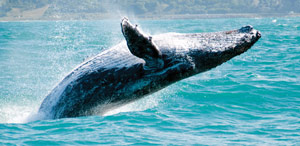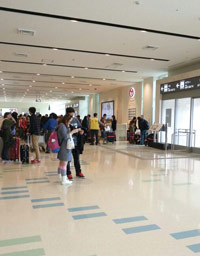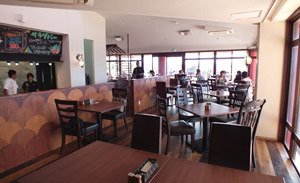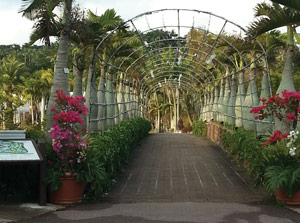
Okinawa is enhancing MICE capabilities, air access and destination awareness to draw events from beyond its key markets. By Kathy Neo
Although weathered all at once by the global economic downturn, H1N1 pandemic and strong Japanese yen in 2009, Okinawa’s tourism has since proven resilient. According to the Okinawa prefectural government, the island registers an annual average of six million tourists per year, with 80 per cent being repeat tourists. Last year, the industry even reached a record high of about 6.4 million visitors in total.
While domestic tourists from mainland Japan still form the bulk of yearly arrivals, the numbers are shrinking as a result of the country’s ageing population, according to the Okinawa Convention & Visitors Bureau (OCVB).
Conversely, international arrivals have seen a steady increase over the years, from 109,000 in 2003 to 382,000 in 2012, followed by a sharp rise to 550,800 in 2013.
Thus encouraged, the island is targeting to receive 750,000 international tourists this year. Taiwan, Hong Kong and South Korea are currently the major foreign source markets, due largely to their proximity as well as the availability of regular direct flights.
On the MICE front, OCVB supervisor for MICE marketing, Koji Niimoto, told TTGmice that apart from the main source markets, the bureau is also seeking to lure more traffic from Singapore, Thailand, Malaysia and Europe, adding that at the moment, the convention business is contributed mainly by mainland Japan, while incentive groups hail from overseas.
Taiwan has been the biggest incentive market due to its close proximity to Okinawa – only about an hour’s convenient flight away. Indeed, the number of overseas applications for OCVB’s incentive support for the financial year ending March 2014 saw the highest number from Taiwan (43), followed by Thailand (18), South Korea (14), China (five) and Malaysia (one).
To accommodate an expanding MICE demand and attract more international events, OCVB is looking to construction a major convention venue with capacity for as many as 20,000 people at once. Niimoto revealed that discussions and research are ongoing for a suitable location to build the venue, with a final decision expected in the next year or so.
Currently the largest convention space in the prefecture is the Okinawa Convention Center (OCC), which offers a maximum seating capacity of 5,000 people in its biggest event space. There are three other convention venues, namely the Bankokushinryokan, Okinawa Institute of Science and Technology Graduate University, and Okinawa Jichikaikan.
The 27-year-old OCC most recently carried out a massive repair work to its theatre hall following a typhoon that shattered the space’s glass wall, a spectacular stage backdrop that brings in panoramic views of the ocean. Also subject to nature’s mercy are several of the centre’s conference spaces, which also boast a feature glass wall with an ocean or garden view, a unique offering that has been drawing event organisers from the region and the wedding market from mainland Japan.
Nevertheless, to lure more business, OCC MICE coordinator, Naomi Nakaza, told TTGmice the centre has been offering special rates to event organisers, such as 20-70 per cent less for international events with more than 10 attendees, and 10 per cent less for the rental of all OCC facilities for large-scale events. The discount policy will continue, Nakaza added, albeit the higher consumption tax implemented since the country’s new financial year in April, but minor adjustments to the qualifying criteria can be expected. She is upbeat that the adjustments will not impact OCC’s business.
Meanwhile, OCVB is also hosting familiarisation trips for the international trade to raise awareness for the island’s offerings. In March this year, it hosted international media representatives for site inspections of Naha Airport’s brand new international terminal, convention centres, wedding venues etc, as well as for experiencing pre-/post-meeting options including whale watching, fishing, diving and spa, among others.
Come September, OCVB will hold a seminar in Singapore to connect some 60 local buyers with Japanese travel agencies, hotels and incentive houses. The bureau has yet to confirm the venue and exact date of the event at press time.
Greater connectivity is being planned as well, specifically to enable direct flights from regional markets such as Singapore, Thailand, Malaysia and Indonesia. Most recently, an MoU was signed on March 25 between Singapore Changi Airport and Okinawa Prefecture for the commencement of direct flights from Singapore in the near future. Through the MoU, the prefectural government will this year focus on promoting tourism traffic from South-east Asia, Australia, India and other regions via Singapore.

When asked how Okinawa intends to stand out as an incentive destination, Niimoto said: “We have our own unique culture that is different from that of mainland Japan (due to historical influences). We offer a different type of Japanese culture to the world. To top this off, we are known for our people’s hospitality, which transcends the language barrier.”
Indeed, the results of a satisfaction survey for foreign tourists conducted by OCVB in 2013 showed the lowest percentage (5.8) of respondents who felt Okinawa’s hospitality was unremarkable, against other indicators. But when compared against the highest percentage (20.6) indicating guidance signs/markings as unremarkable, it does leave room for wonder if hospitality truly “transcends the language barrier”.
Sen Tamaki, manager for overseas marketing at Okinawa Convention & Visitors Bureau, admits that the island continues to face inadequacies in multi-lingual skills, land transportation and Wi-Fi access.
“Language is a key problem,” acknowledged Tamaki. “OCVB currently subsidises up to 50 per cent of the cost of language courses for staff of private companies. A list of qualified language teachers and service training instructors is planned for release this year for the companies’ choice. We also need more English-Japanese signs on the roads, and we will propose this to the prefectural government.”
As for land transportation, Tamaki said taxis in Okinawa are expensive, while the public bus network is complicated even to the locals.
“We hope to have a subway system in the future, but this will be a major project that takes time, the quickest being 10 to 15 years for the commencement of construction,” he explained.
In response to a rising number of complaints about the lack of free Wi-Fi service in public areas, he said OCVB provides financial support to hotels and small enterprises to install the necessary equipment.
Additionally, research is ongoing for star-rating Okinawa’s hotels to bring them in line with international practice, he revealed.
Meanwhile, two major hotel projects are expected to complete this year, namely the 238-key Hotel Orion Motobu Resort & Spa and 346-room Hilton Okinawa Chatan, in July and September respectively.
Need to know
In pursuit of Moby-Dick

Okinawa may not be renowned for whale watching, but it is possible to obtain this experience here if one gets the season right, which is the period from December to March. Groups can depart from Naha city or Onna Village and engage in this breathtaking activity for three hours in a boat that takes 17 to 60 people at one time. Cost is 3,800 yen (US$37) to 4,500 yen per person; reservation is necessary with Okinawa Tour Island (http://option.okitour.net/special/whalewatching/).
Brand new terminals greet air, cruise passengers

Naha Airport opened a brand new international terminal in February this year in response to increasing international traffic. The new four-storey terminal spanning 23,700m² is almost four times bigger than the previous one, featuring 20 check-in counters, two F&B outlets, two souvenir shops and an observation deck on the top floor.
Meanwhile, the new Naha Cruise Terminal, opened in April, can accommodate larger vessels with its longer 340m berth and water depth of 10m. It spans about 4,500m² over two floors, including a rooftop observation deck. About 130,000 cruise arrivals are targeted for the new financial year, according to OCVB.
Angling fun
Fishing is hardly a boring activity, especially if done in groups. Divide into teams to compete for the most number of fish caught, chat and crack some jokes while waiting for the target to be hooked, and cheer in unison when someone has finally made a catch. Available all year round, Marine Palette (http://brc.marinepalette.com/) offers three- and six-hour trips out to sea for small groups of up to eight people in each boat, complete with a fisherman who teaches how to attach the bait and reel in the catch. Charges are from 5,000 yen and reservation is necessary. Choose from three departure venues: Naha city, Yomitan Village or Onna Village.
Dine, cruise and enjoy the sunset
Enjoy a ‘rocking’ good company dinner post-meeting on board a small ship that can accommodate up to 180 people each time in its restaurant. Local cruise company Westmarine (hwww.westmarine.co.jp) offers a cruise dinner as well as one at sunset, both lasting about one hour 45 minutes. Western fare is served, including salad, main course, dessert and beverage. Charges are from 3,900 yen per person. From April to September, departure times from Naha Port are 17.45 and 20.15 for sunset cruise and dinner cruise respectively; from October to March, departure times are 17.00 and 19.45 respectively.
A home to stay
Yomitan Village (www.ti-da33.com) offers the Mimpaku homestay programme for a maximum of 350 people, each house accommodating four. Participants get to experience the local folklife through farming, cooking and handicraft-making activities as well as sanshin guitar and ryuku traditional dance performances. Charges are from 12,000 yen per person per day, inclusive of Okinawan breakfast and dinner. For more information or reservation, contact Chiharu Tamaki of Sky Tourists Service at sky1194@churamura.com and (098) 958-1193.

Ideas
Two-night meet-and-bond programme

Day 1
Arrive at Naha Airport’s new international terminal, which opened in February this year.
Check into the MICE-friendly Loisir Hotel & Spa Tower Naha, and have a short rest before heading out to the Southeast Botanical Gardens for some rejuvenating greenery. Find over 1,300 plant types here, as well as fruit and herb gardens. There is also a large pond, the surroundings of which are dotted by colourful flowers and palm trees. Electric trams are available for a guided tour of the spacious grounds, as are guided walking tours which offer a closer look at the flora.
At 17.00, depart from Naha Port for a sunset cruise dinner on board a small ship owned by local company Westmarine. Eat, drink and be merry from the Western fare offered, while waiting to take in the beautiful changing colours of nature outside the window as the sun slowly sets.
Day 2
After breakfast at the hotel and a half day of meetings, head out to Onna Village for departure out to sea in a whale-watching boat. Bring along a poncho or windbreaker though, or risk getting wet and catching a cold as the open-deck boat speeds through the waters. Although much depends on your luck as well, the best months to sight the lovely sea creatures are from December to March.
After the three-hour trip out at sea, head back on land for some retail therapy at the Okinawa Outlet Mall Ashibinaa, a beautiful architecture of eclectic ancient Greek, contemporary and native Okinawan elements. Find discontinued or sample products from more than 100 popular brands here – especially European brands – which are reasonably priced and of good quality.
If you are not too keen to shop, remove your shoes and stroll along the beach, which is just a minute’s walk from the mall, feeling its soft-as-talc sand and the Okinawan sea breeze.
After dinner, enjoy a session of Loisir Hotel’s renowned in-house onsen at the spa to chase away the fatigue of the day.
Day 3
Before departing from Naha Airport, check out its two souvenir shops featuring Okinawan glassware and jewellery, among other things.





















